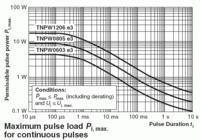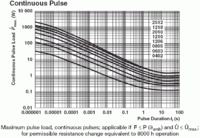deepakchikane
Full Member level 3
- Joined
- Jul 17, 2012
- Messages
- 178
- Helped
- 2
- Reputation
- 4
- Reaction score
- 2
- Trophy points
- 1,298
- Location
- Mumbai, Maharashtra, India, India
- Activity points
- 2,623
Follow along with the video below to see how to install our site as a web app on your home screen.
Note: This feature may not be available in some browsers.
"ABSOLUTE MAXIMUM RATINGS (TC= 25 °C, unless otherwise noted)
Continuous Drain Current VGSat 10 V TC= 25 °C ID 5.5A TC= 100 °C 3.5"
Ok cool, for Vgs = 10V
the gate charge is 25nC(from the table)..
Current is moving of charge (coulombs per second)..
current is going to be how fast the capacitor charging or turning the mosfet ON.. after the capacitor charging the current will be zero...
It doesnt matter how much resistor you are putting in the gate it matters how much voltage is in the gate..
Really I don know how to explain...........
Calculation of gate resistor wattage
Dear all,
1) How to calculate the wattage required for gate resistors..??
2) How to calculate current required to the Mosfet from datasheet..??
Looking forward to hearing you soon..!!
for IRF 730 MOSFET..!!
Hi deepakchikan
It is simple .
You know about Tr of your mosfet . ( rise time ) ( by datasheet )
Vc=1/C integral over ic dt ====> from zero up to tr ====> Vc=tr*ic/c ===> ic = Vc*c/tr for usual mosfets VGS=15 it will be turned on . so Vc=15 then required ic = 15*ciss/tr and of course it is inrush current . so required power of the series resistor with gate can be calculated according to this inrush current .
Best Wishes
Goldsmith
Hi deepakchikaneDear Goldsmith,
1)The resulting ic will be the gate current of mosfet..??
There are many ways for everything in electronics . electronics is very good because you won't have just one way !correct me if i am wrong in calculations..
Hi deepakchikane
Yes it will be the required inrush current for gate of your mosfet so the mosfet being turned on as well as fast as possible .
There are many ways for everything in electronics . electronics is very good because you won't have just one way !
The way that i've suggested is according to the main equation of a capacitor ic=c*dv/dt
I have saw many ways for calculating gate inrush current . it is up to you to go though which one . ;-)
Good Luck
Goldsmith
Hi againplease give me right direction for power electronics books & analog circuit design..
It is your first but it is my only ! :wink:*i love to play with the electronics.. coz electronics is my first girlfrend...when i decided to work for power electronics jobs...
The only thing that i couldn't understand yet , is why humans should fight together ? why not helping each other to have a better world ?
Hi Mr coolmost definately your mosfet will have a peak current because the action is to charge an "effective" gate capacitance through a gate resistor. however, to determine peak current you can not use i=cdv/dt because this equation does not take the gate resistor into consideration which changes A LOT the peak current achieved. there are a few appnotes out there that describe this properly. i don't have the full equation off the top of my head but i recall i read it in Microsemi, Sensitron, infineon app notes and it was an eequaiton that based based on RC time constant and the shape of the charge current being triangular. this is verified in PSpice too by the way. the peak current is important because this value must be supported by your mosfet gate drive IC.
the original post was about calculating the wattage of teh gate resistor. if you use i=c*dv/dt you will get a theoretical peak current across 0 ohms .. so your wattage is 0 and no power dissipated (capacitor fully charged though so that's nice). if you then took this peak current and decided that I^2*Rgate = wattage, you would end up with a wattage rating that is higher than it needs to be.
this is why to consider the gate resistor in determining wattage. resistor value and its effect on the rise time of the charge current and then take the RMS of that waveform to determine the wattage. so the trick is to know the shape of the waveform in both charge & discharge and to see if the discharge current goes through the same resistor or maybe a different resistor so you can determine Ron watt and Roff watt rating.
now what happens when you are on the bench and you try different gate reesistor value during the tuning process. yikes.. that's not good.. caues the watt rating can change as you change resistor value. so maybe the worse case method would be preferrable during development after all, gives you lots of room to freely chose gate resistor value that is optimal

